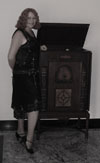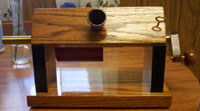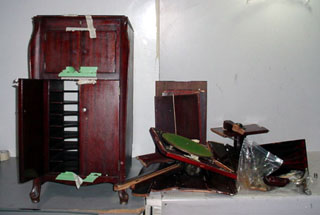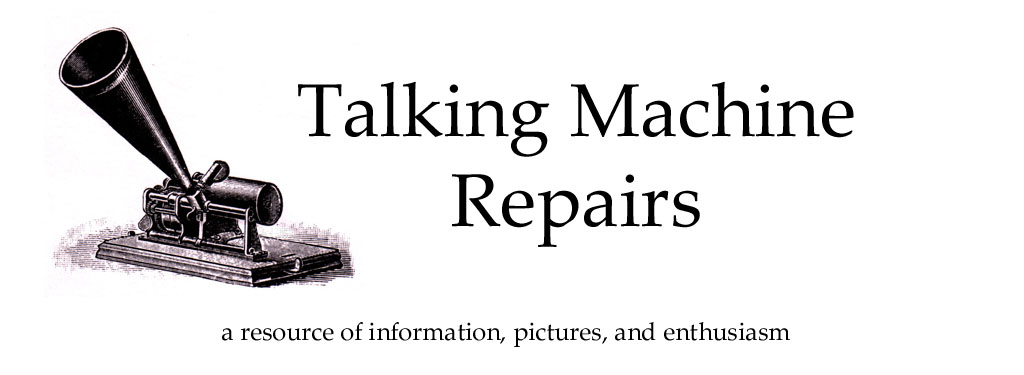
email: wyatt *at* EdisonDiamondDisc.com
phone: five eight five, two two four, five four five three
a note for 2015: this website is a mad mess of information, added randomly, at whimsy. I will TRY to keep it somewhat more organized
but no guarantees are made. I have LOTS of new information to post, for your enjoyment. Have a look around............
NEW and unsorted information:
|
PHONOGRAPH
RESOURCES:
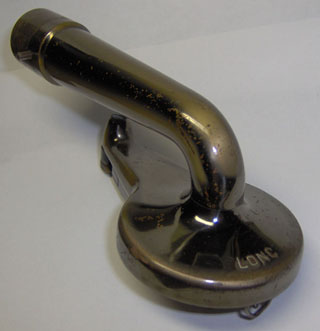 Short lived LONG PLAY reproducer used to play 24 min 10" Discs, and the 40 min 12" Discs. Note the word LONG stamped into the head, and the canted angle to improve tracking. This has a significantly smaller stylus tip radius to play the near-hair-thin grooves of Edison Long Play Diamond Discs. The groove was narrower than a modern 33-1/3 LP record, spinning at 80rpm, under tremendous stylus weight! Incredible! Long Play Discs must ONLY be played with a Long Play reproducer AND Long Play GEAR SET. The gear set slows down the horn/reproducer tracking to necessitate playback of these microgroove records. |
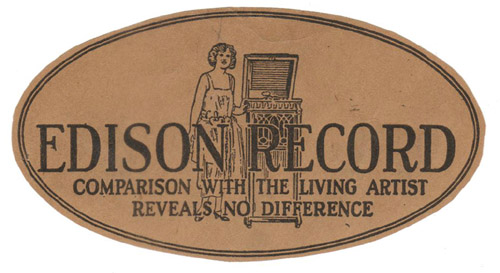 The vertically cut Edison Diamond Disc recordings allow the sinusoidal waves of sound to be "lifted" off the disc surface in a near frictionless manner. Recordings could be played thousands of times without showing signs of wear unlike the Berliner method of reproducing sound, which created a lot of dust and record wear from the steel needle tracking its way along a shaky groove. |
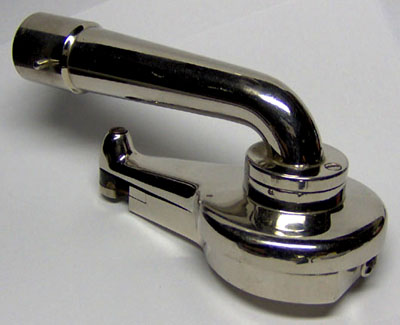 Edison Diamond Disc DANCE reproducer, with 3-screw flange between top tube and reproducer body. This was released to play ACOUSTIC Fox Trot "dance" Diamond Discs before the electrically recorded Diamond Discs were released by Edison. The goal was GREATER VOLUME. When the electrically recorded 52,000 series records came out, the next version named the "New Standard" or "EDISONIC" was produced. It was technically different in that the Edisonic diaphragm was thicker, and did not have a suspension spring above it (that is why the Dance has a flange, to access the suspension spring). The Edisonic's heavier weight helped keep the diamond stylus down in-the-groove, to track the higher modulation of the electrical recordings, and to eliminate blasting and strident notes. The Edisonic also plays acoustic discs quite well, and is an excellent upgrade still. |
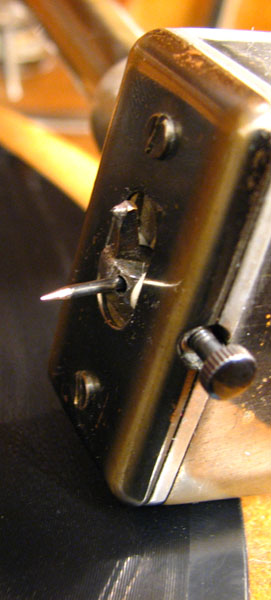 Detail of the special electric pickup on Edison C-2 Radio Phonographs. The C-2 is capable of playing electrically recorded Diamond Discs, as well as Needle Type records via insertion of a Medium Tone steel phonograph needle. Observe the diamond stylus mounted on an arm just above the needle chuck. |
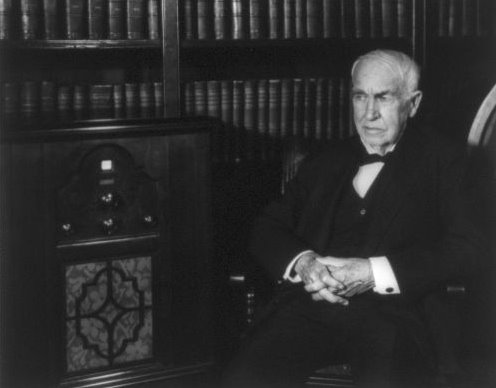 T.A.
Edison trying to understand the music of the young
people.
|
| (c)2015 EdisonDiamondDisc.com |
